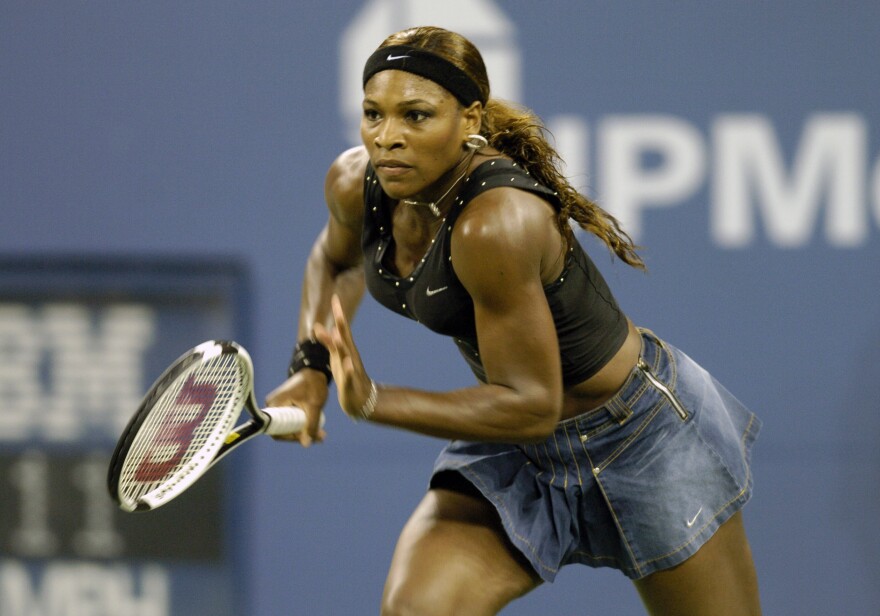Serena Williams’ spouse stands up for her Super Bowl dance performance
Alexis Ohanian, Serena Williams’ husband, is defending her after she faced criticism for her dance at the Super Bowl halftime show. The dance, known as the “crip walk,” is closely tied to gang culture in Southern California and has sparked controversy ever since Serena performed it at the event. Many have expressed strong opinions, but Ohanian stands by his wife, emphasizing that the dance is more than just a movement—it’s a part of Serena’s cultural expression.
During the 2025 Super Bowl halftime show, Kendrick Lamar took the stage at the Caesars Superdome in New Orleans, and as the beat dropped on his song “Not Like Us,” Serena Williams appeared on screen, effortlessly performing the crip walk. She brought a sense of ease and coolness to the dance, something only she could do, showing her strong connection to the music. The song itself is a diss track aimed at rapper Drake, a rivalry that seemed to involve Williams as well. She had once dated Drake before marrying Ohanian, which added another layer to the controversy surrounding her performance. Growing up in Compton, as Lamar did, Williams’ dance move was a subtle but clear statement in the ongoing feud between the two rappers.
The crip walk, originally created by Robert “Sugar Bear” Jackson in the 1970s, became a part of gang culture, specifically associated with the Crips street gang. Despite its controversial roots, the dance has gained mainstream popularity over the years and is now often seen as a form of artistic expression rather than a symbol of violence. Serena’s execution of the crip walk at the Super Bowl was met with mixed reactions, especially considering her history with the dance.
This wasn’t the first time Serena faced criticism for performing the crip walk. During the 2012 London Olympics, she famously danced the same move after winning a match at Wimbledon. Some people applauded the moment as a raw expression of emotion, while others criticized it as distasteful and inappropriate. LA Times columnist Bill Plaschke remarked that her dance at Wimbledon was a sign of how far removed she was from her roots, which he described as being tied to “violence and death.”
However, Serena defended herself, explaining that it was just a dance, and she wasn’t trying to make a statement related to gang culture. Many fans agreed with her sentiment, writing that it was simply a form of expression and shouldn’t be overblown. Still, critics continued to voice their opinions, some calling her actions “classless” or “stupid.” The debate over her dance continued to divide people, but it highlighted the complex relationship between art, culture, and social history.
After the Super Bowl performance, Serena shared a video on social media, joking about the event, mentioning how she wouldn’t have performed the crip walk at Wimbledon due to the potential consequences. The video quickly went viral, with fans praising her appearance and her unbothered attitude. Many celebrated her for representing herself and her culture in such an iconic way, with one fan writing, “Serena Williams! The converse, the outfit, the dance moves, the feature in Kendrick Lamar’s ‘Not Like Us’ Super Bowl halftime show, winning on and off the tennis court.”
But not everyone was impressed. Some critics reminded Williams of her painful personal history, pointing out that her older sister, Yetunde Price, was tragically killed in a gang-related shooting in 2003. They questioned how Williams could perform the crip walk, given her personal connection to gang violence. One tweet read, “Crip walking on national TV when her older sister was murdered by Crips?” Others expressed similar sentiments, suggesting that the dance was disrespectful and would have been inappropriate given the circumstances surrounding her sister’s death.
Despite the backlash, Alexis Ohanian was quick to defend his wife. The day after the Super Bowl, he posted a message on Twitter, addressing the critics. “Some of y’all have no idea how criticized Serena was for this same dance at Wimbledon 13 years ago and it shows… This is bigger than the music,” he said. He also shared a screenshot of remarks from conservative sports commentator Jason Whitlock, who had harshly criticized Serena’s 2012 dance, even comparing it to making an inappropriate joke in a church.
Ohanian’s post garnered support from fans, with many praising Serena’s authenticity and strength. One fan wrote, “The girls that get it get it! There’s a reason Serena keeps winning off the court too,” while another said, “Wimbledon should apologize to Serena.” Ohanian’s defense highlighted not just the cultural significance of the moment but also the importance of standing up for his wife in the face of unjust criticism.
In the end, Serena’s Super Bowl performance was much more than just a dance—it was a statement, a display of confidence, and a reminder of the complexities surrounding cultural expressions in mainstream media. Whether one agrees with her choice or not, it’s clear that Serena Williams continues to be a force both on and off the tennis court.
